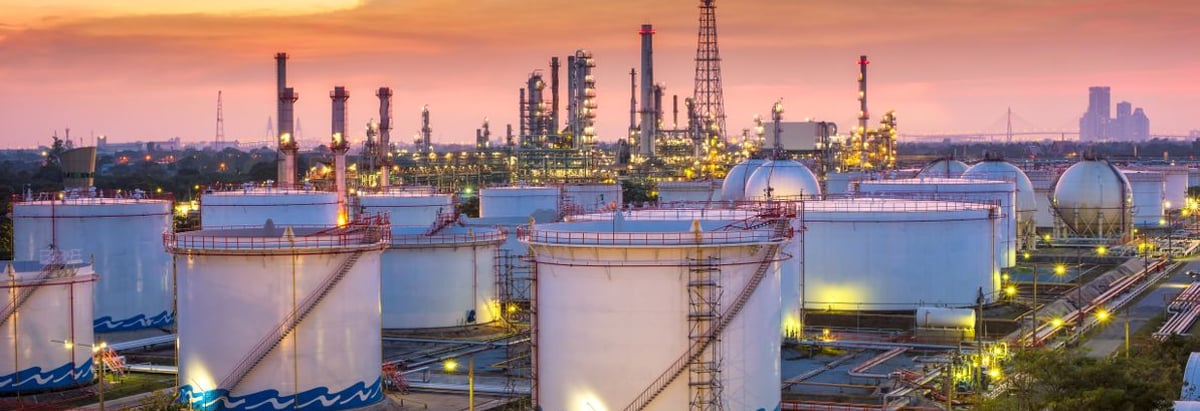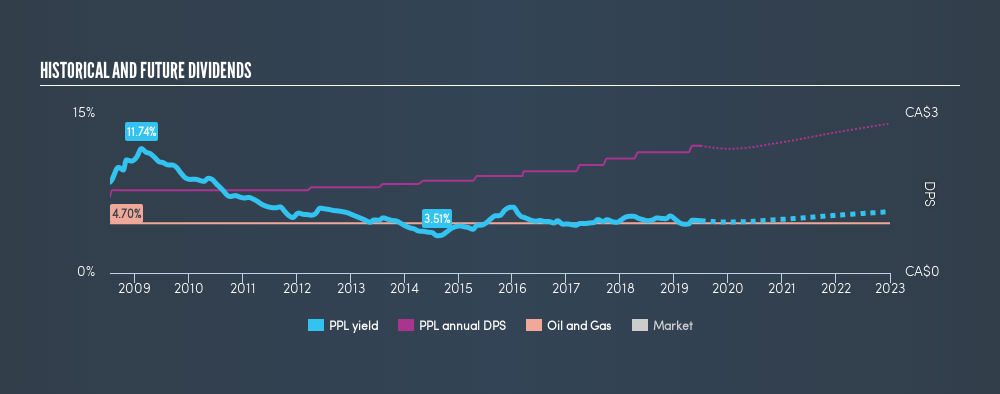- Canada
- /
- Oil and Gas
- /
- TSX:PPL
Pembina Pipeline Corporation (TSE:PPL) Is Yielding 4.9% - But Is It A Buy?

Want to participate in a short research study? Help shape the future of investing tools and you could win a $250 gift card!
Could Pembina Pipeline Corporation (TSE:PPL) be an attractive dividend share to own for the long haul? Investors are often drawn to strong companies with the idea of reinvesting the dividends. Yet sometimes, investors buy a popular dividend stock because of its yield, and then lose money if the company's dividend doesn't live up to expectations.
In this case, Pembina Pipeline likely looks attractive to investors, given its 4.9% dividend yield and a payment history of over ten years. We'd guess that plenty of investors have purchased it for the income. Some simple research can reduce the risk of buying Pembina Pipeline for its dividend - read on to learn more.
Click the interactive chart for our full dividend analysis

Payout ratios
Dividends are usually paid out of company earnings. If a company is paying more than it earns, then the dividend might become unsustainable - hardly an ideal situation. Comparing dividend payments to a company's net profit after tax is a simple way of reality-checking whether a dividend is sustainable. In the last year, Pembina Pipeline paid out 101% of its profit as dividends. Unless there are extenuating circumstances, from the perspective of an investor who hopes to own the company for many years, a payout ratio of above 100% is definitely a concern.
In addition to comparing dividends against profits, we should inspect whether the company generated enough cash to pay its dividend. Pembina Pipeline paid out 117% of its free cash flow last year, suggesting the dividend is poorly covered by cash flow. As Pembina Pipeline's dividend was not well covered by either earnings or cash flow, we would be concerned that this dividend could be at risk over the long term.
Is Pembina Pipeline's Balance Sheet Risky?
As Pembina Pipeline's dividend was not well covered by earnings, we need to check its balance sheet for signs of financial distress. A quick check of its financial situation can be done with two ratios: net debt divided by EBITDA (earnings before interest, tax, depreciation and amortisation), and net interest cover. Net debt to EBITDA is a measure of a company's total debt. Net interest cover measures the ability to meet interest payments. Essentially we check that a) the company does not have too much debt, and b) that it can afford to pay the interest. Pembina Pipeline is carrying net debt of 3.62 times its EBITDA, which is getting towards the upper limit of our comfort range on a dividend stock that the investor hopes will endure a wide range of economic circumstances.
We calculated its interest cover by measuring its earnings before interest and tax (EBIT), and dividing this by the company's net interest expense. Pembina Pipeline has EBIT of 5.68 times its interest expense, which we think is adequate.
Dividend Volatility
Before buying a stock for its income, we want to see if the dividends have been stable in the past, and if the company has a track record of maintaining its dividend. Pembina Pipeline has been paying dividends for a long time, but for the purpose of this analysis, we only examine the past 10 years of payments. During this period the dividend has been stable, which could imply the business could have relatively consistent earnings power. During the past ten-year period, the first annual payment was CA$1.44 in 2009, compared to CA$2.40 last year. This works out to be a compound annual growth rate (CAGR) of approximately 5.2% a year over that time.
Businesses that can grow their dividends at a decent rate and maintain a stable payout can generate substantial wealth for shareholders over the long term.
Dividend Growth Potential
Dividend payments have been consistent over the past few years, but we should always check if earnings per share (EPS) are growing, as this will help maintain the purchasing power of the dividend. It's good to see Pembina Pipeline has been growing its earnings per share at 15% a year over the past 5 years. While EPS are growing rapidly, Pembina Pipeline paid out a very high 101% of its income as dividends. If earnings continue to grow, this dividend may be sustainable, but we think a payout this high definitely bears watching.
Conclusion
When we look at a dividend stock, we need to form a judgement on whether the dividend will grow, if the company is able to maintain it in a wide range of economic circumstances, and if the dividend payout is sustainable. Pembina Pipeline paid out almost all of its cash flow and profit as dividends, leaving little to reinvest in the business. That said, we were glad to see it growing earnings and paying a fairly consistent dividend. Ultimately, Pembina Pipeline comes up short on our dividend analysis. It's not that we think it is a bad company - just that there are likely more appealing dividend prospects out there on this analysis.
Companies that are growing earnings tend to be the best dividend stocks over the long term. See what the 11 analysts we track are forecasting for Pembina Pipeline for free with public analyst estimates for the company.
If you are a dividend investor, you might also want to look at our curated list of dividend stocks yielding above 3%.
We aim to bring you long-term focused research analysis driven by fundamental data. Note that our analysis may not factor in the latest price-sensitive company announcements or qualitative material.
If you spot an error that warrants correction, please contact the editor at editorial-team@simplywallst.com. This article by Simply Wall St is general in nature. It does not constitute a recommendation to buy or sell any stock, and does not take account of your objectives, or your financial situation. Simply Wall St has no position in the stocks mentioned. Thank you for reading.
About TSX:PPL
Established dividend payer and fair value.
Similar Companies
Market Insights
Community Narratives





